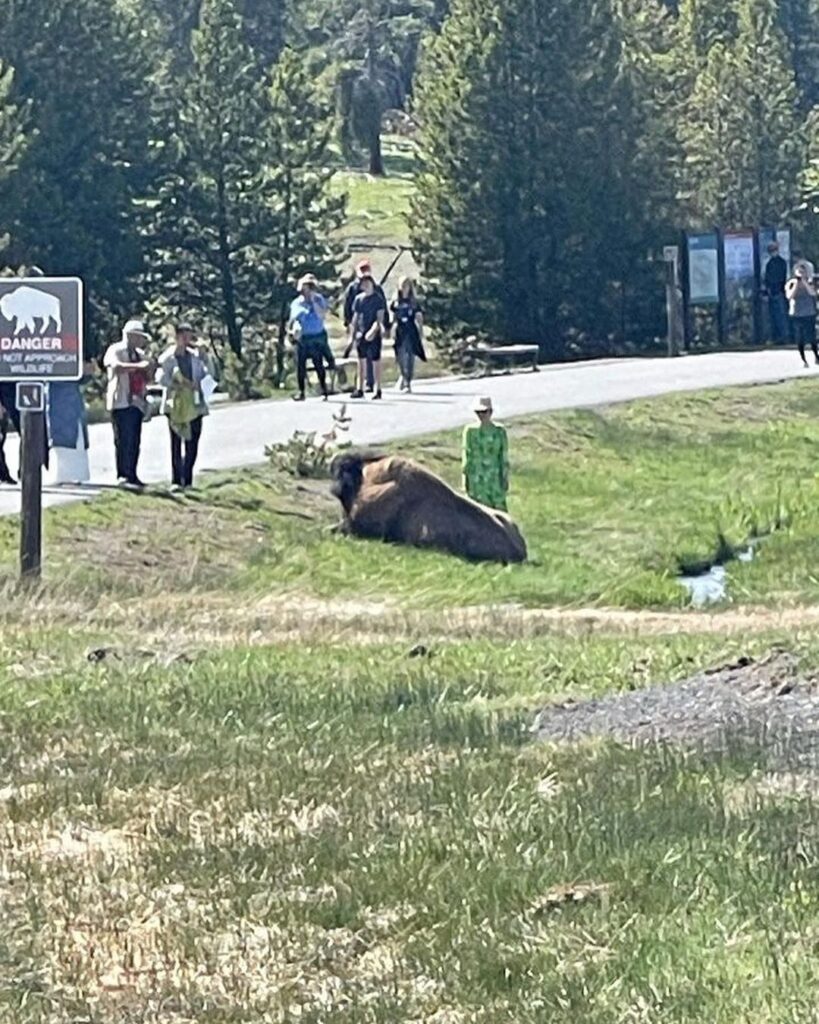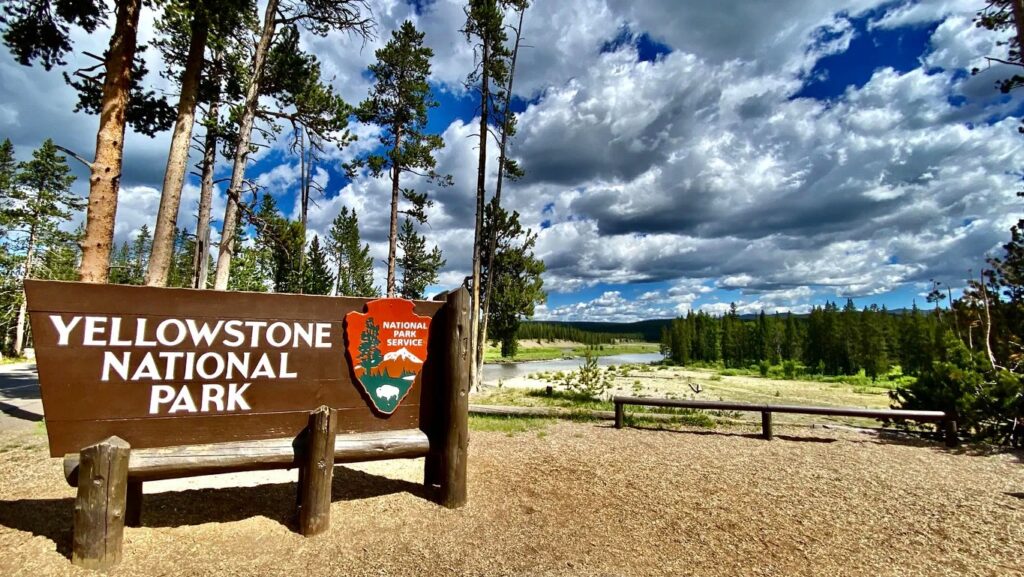
In the age of social media, the disturbing trend of tourists engaging in irresponsible behavior at national parks is on the rise, and a recent incident at Yellowstone National Park has once again ignited public outrage.
A series of photos shared on Instagram captured a woman standing dangerously close to a prone bison on the side of a road, while others swarmed in mere feet away. The first photo, credited to another user, prominently displayed a warning sign reading “DANGER: DO NOT APPROACH WILDLIFE.”

The Instagram caption revealed the alarming proximity between the tourist and the bison, recounting, “She was probably a foot or 2 [from the animal and] was about to pet him, and a ranger started yelling at her from the road! This was across from the Old Faithful gas station, and someone has just been charged by the same animal. Ambulance and rangers were just across the street from this disaster in waiting!”
The incident drew attention to a growing issue of reckless behavior by visitors in national parks, prompting the creation of an Instagram page dedicated to exposing such individuals, humorously named “Tourons of Yellowstone,” a portmanteau blending “tourists” and “morons.”
Comments on the post expressed not only disbelief but also a call for consequences. One user remarked, “The sign saying ‘do not approach wildlife.’ This is not only irresponsible, this is highly disrespectful. There should be fines for careless behavior like this.” Another suggested, “Unbelievable. Lifetime ban of all national parks. Need to enforce a $10,000 fine and/or 6 months in jail for failing to follow the park rules. Period.”

Bison, like all wildlife, can be unpredictable, and visitors are advised to stay at least 25 yards away. The National Park Service emphasized that approaching bison poses a threat, leading the animals to respond with warning signs such as bluff charging, head bobbing, pawing, bellowing, or snorting. Yellowstone’s bison, especially during their mating season from mid-July to mid-August, can become agitated more quickly.
Yellowstone’s hazards extend beyond wildlife encounters, including boiling hot springs, responsible for more injuries and fatalities than any other natural feature in the park. Visitors are reminded to stay on boardwalks, refrain from feeding wildlife, and never approach animals.
Yellowstone, with its significant bison population of approximately 5,450 in 2021, holds the largest public land herd in the United States. The park, spanning Wyoming, Montana, and Idaho, serves as the exclusive habitat for bison since prehistoric times.

Despite the documented risks, incidents like these jeopardize the safety of both visitors and wildlife, prompting concerns about the preservation of the Yellowstone experience. As one user lamented, “I honestly feel awful the Park Rangers have to deal with this. I thought keeping kindergartners in line was tough. But TOURONS.” Another expressed worry about the impact on responsible visitors, stating, “These people are going to mess the Yellowstone experience up for those of us that have half a brain and common sense!!”

Leave a Reply